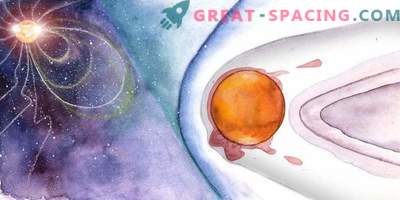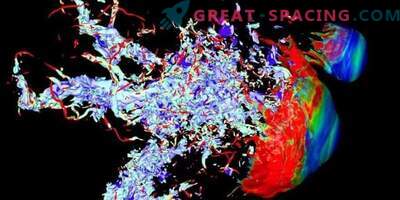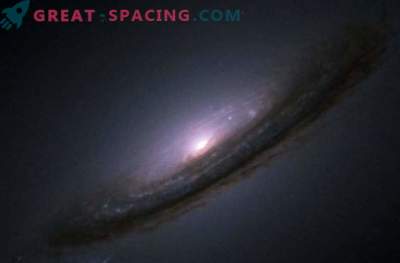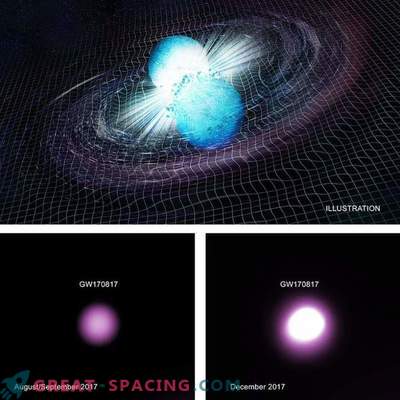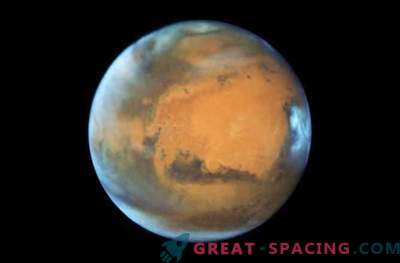
A new study shows the connection between Mars and supersonic particles of the solar wind. Researchers have long known that a shock wave is formed upstream from the planet. It indicates the line of slowing the solar wind when it collides into the planetary magnetosphere or atmosphere.
In the Red Planet, the ionosphere is the main obstacle - a layer with electrically charged particles (upper atmosphere). For many decades, the vehicles observed this phenomenon and noted that changes in the ionosphere and exosphere play an important role in changing the location of the shock wave boundary.
The distance of the Martian shock wave increases as the dynamic pressure of the solar wind decreases.
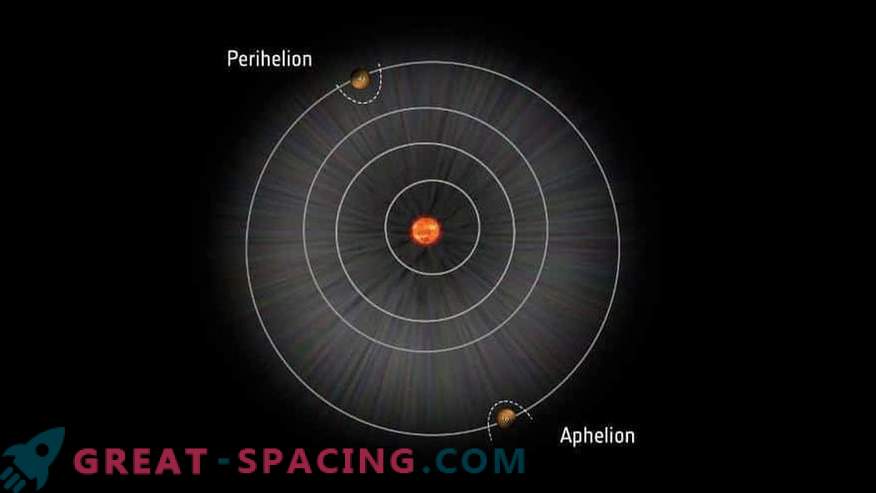
Martian orbit - aphelium and perihelion
But the growth of the shock wave distance coincides with an increase in the number of incoming sunlight on extreme UV waves. As a result, the rate of formation of ions and electrons increases, which means that the thermal pressure in the ionosphere increases (it is better resisted to the solar flow).
The position of the shock wave can also be influenced by the Martian orbital passage. Its orbit is more elliptic (206-249 million km). Scientists decided to thoroughly understand why the position of the shock wave changes during the Martian year. For this, ASPERA-3 was used and 11,861 cases were analyzed.
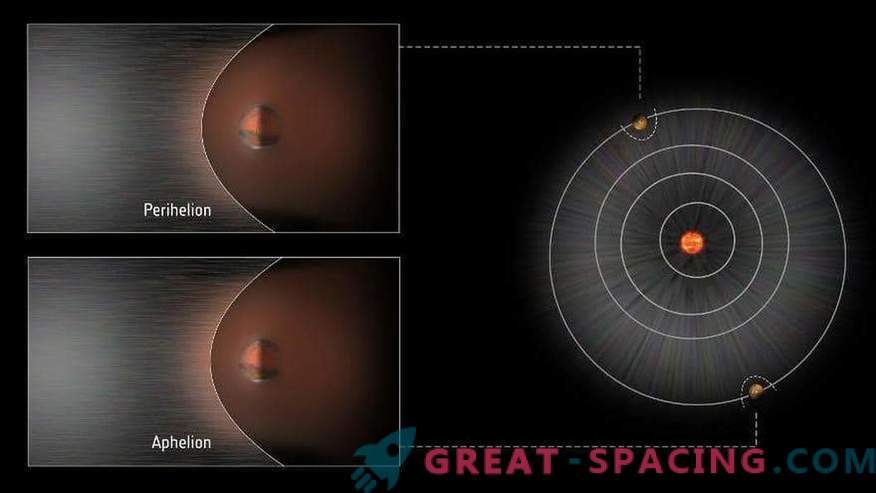
Moving Martian Shock Wave
On average, the shock wave was located closer to the planet with aphelion (maximum distance from the Sun). The average distance of the shock wave is 8102 km around aphelion, and the maximum is 8984 km (perihelion).
The study shows that the density of the solar wind, the strength of the interplanetary magnetic field and the number of rays should decrease with distance from the star. But what affects the most? It turns out that the shock wave reacts most sensitively to the release of extreme UV rays. But the position is also affected by the Martian seasonality, because when the planet warms up on perihelion, it receives more solar radiation.
But so far it is not possible to single out one specific mechanism. Additional observations of the load on atmospheric dust and the upper Martian atmosphere will be required.




